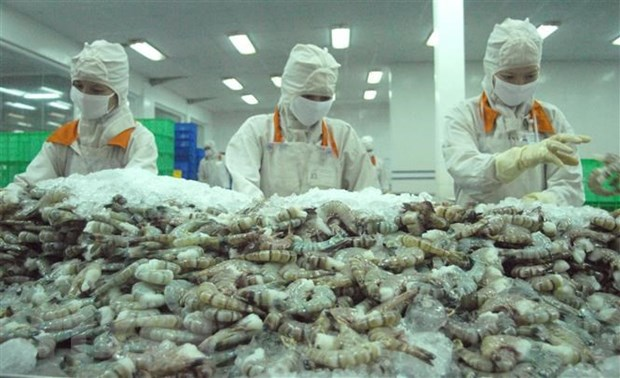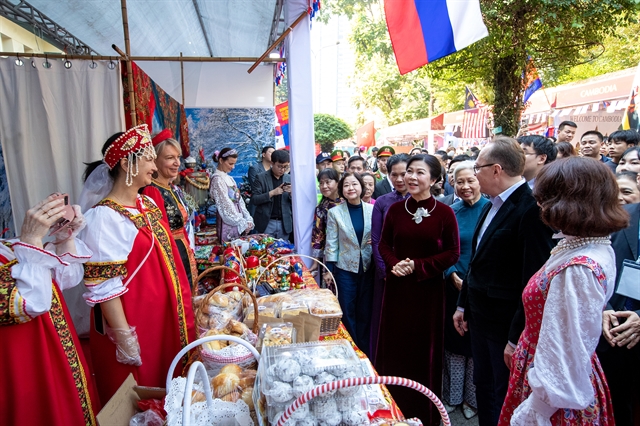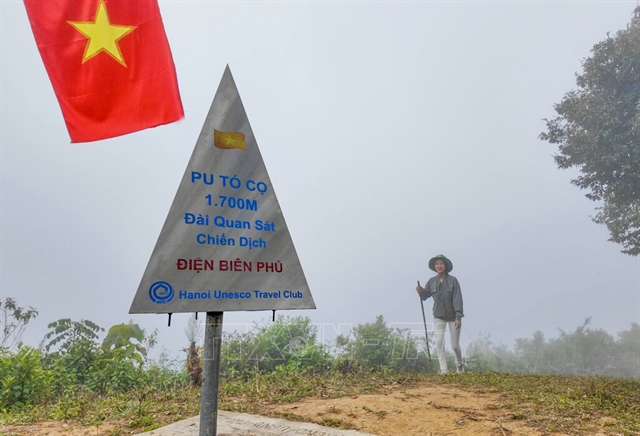 Travel
Travel

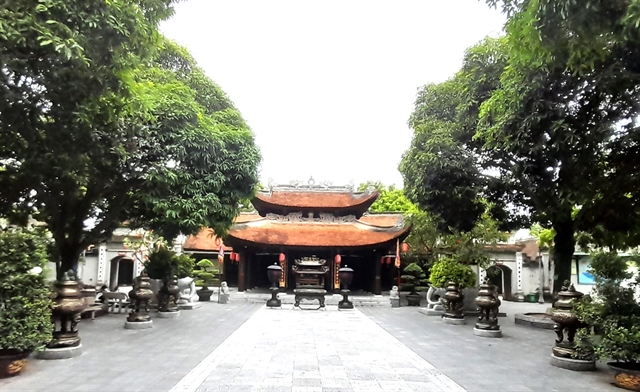 |
| Main Hall of Đô Temple. — VNS Photo Thanh Nga |
by Thanh Nga
When mentioning Bắc Ninh Province, people often think of sweet quan họ (love duet) melodies, unique traditional craft villages and valuable historical and cultural heritage.
Among them, Đô Temple is a destination not to be missed. This place preserves priceless historical, cultural and spiritual values during Lý dynasty (1009-1225).
Located in Đình Bảng Ward, Từ Sơn City, Bắc Ninh, about 20km from central Hà Nội, Đô Temple is one of the most important historical and cultural heritage sites of Việt Nam. It was built in the early 11th century to worship the eight kings of the Lý dynasty, who had the merit of founding, building and defending the country.
Nguyễn Tiến Chiến, head of the relic site management board, said that in 1019, when King Lý Thái Tổ (the founder of the Lý dynasty) had been on the throne for ten years, he returned to his hometown chose a piece of land to be his burial place after his death, about one kilometre from the current Đô Temple gate.
In 1028, the king passed away and was buried in his hometown according to his will. Later, all Lý dynasty kings were here after death.
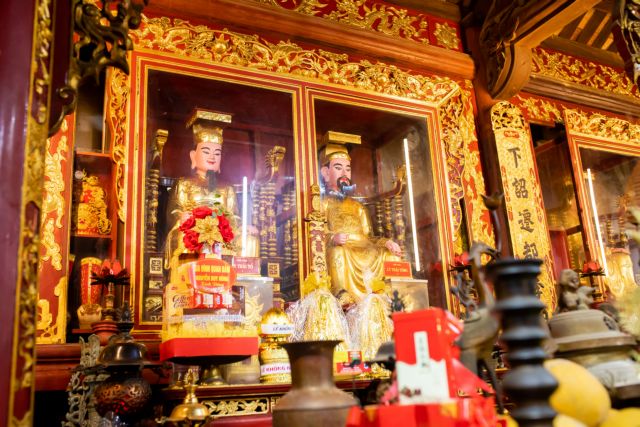 |
| Đô Temple was built in the early 11th century to worship the kings of the Lý dynasty. — Photo bacninhtv.vn |
In 1030, King Lý Thái Tổ had Đô Temple built to worship his father King Lý Thái Tổ. Since then, the temple has become a place to worship Lý dynasty kings, according to the book Historical and Cultural Heritage of Đô Temple compiled by author Nguyễn Đức Thìn.
Đô Temple is one of the most intact architectural works of the Lý dynasty to this day. It represents a harmonious combination of royal architecture and folk architecture. The structures in the temple were built of ironwood and laterite, with many sophisticated decorative details, demonstrating the talent of artisans of the Lý dynasty.
The temple also has many sophisticated stone and wood sculptures, depicting diverse themes such as dragons, phoenixes and lotus flowers, reflecting the concept of the universe, life and spirituality of the Vietnamese people during the Lý dynasty.
The temple went through numerous renovations over the years and the structure that was built and maintained in 1602 was the largest such version of them all.
Đô Temple was built on an area of more than 31,000sq.m, encompassing 21 sub-constructions and it is divided into two parts - the inner and outer areas.
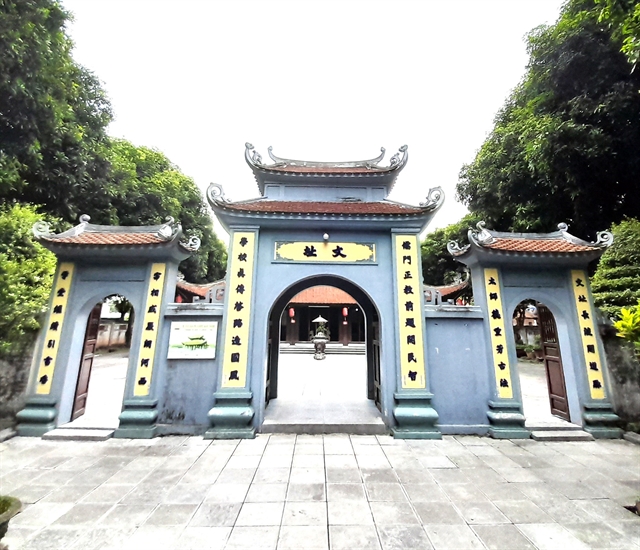 |
| Văn Chỉ House, a place to worship civil mandarins. — VNS Photo Thanh Nga |
Following the direction of the temple entrance, the first building on the left side of the entrance is Văn Chỉ House, a place to worship civil mandarins.
Passing through the Văn Chỉ House, before reaching the main gate of the inner area, visitors will see a large ceramic mural inscribing the content of Chiếu Dời Đô (Edict on the Transfer of the Capital). The royal proclamation has 214 words corresponding to 214 years of rule by the eight Lý kings. The mural was completed on the occasion of the 1,000th anniversary of Thăng Long – Hà Nội. This is considered the largest Bát Tràng ceramic mural in Việt Nam.
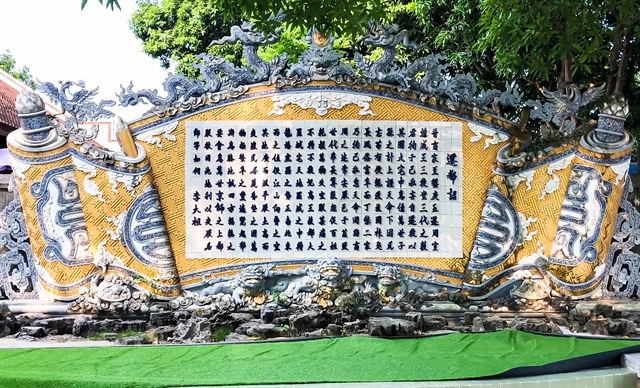 |
| The large ceramic mural inscribing the content of 'Chiếu Dời Đô' (Edict on the Transfer of the Capital) at Đô Temple. Photo bacninhtv.vn |
Đô Temple’s main gate is Ngũ Long Môn (Five-dragon Gate), which is skillfully carved. Ngũ Long Môn is divided into one main and two sub-gates, with the main one carved with a flying dragon symbolising the desire for freedom.
In the past, the main gate was only opened when the king came to visit. The two sub-gates on the right and left were for civil mandarins and military mandarins. People and soldiers would go through the two side doors located next to it. Currently, the management board has opened the two doors on the left and right to serve visitors. The main gate will only be opened on the king's death anniversary, festivals or when welcoming important figures.
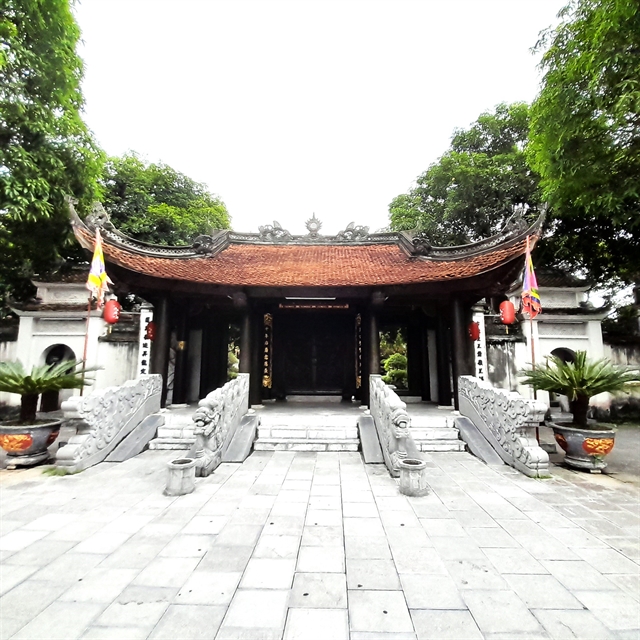 |
| Ngũ Long Môn is Đô Temple’s main gate. — VNS Photo Thanh Nga |
Passing through Ngũ Long Môn is the dragon yard and the interior area of the temple. The dragon yard is designed with eight horizontal stone panels, each square brick has a circular pattern symbolising the earth and sky.
The interior of Đô Temple includes Tiền Tế House, where the kings are worshiped on death anniversaries or festivals, and Linh Cung (Holy Palace), where the eight kings are worshiped. The Holy Palace is more than 200sq.m wide, built into seven compartments according to the odd-numbered architecture of ancient temples and pagodas.
The middle compartment has a statue of King Lý Thái Tổ and his eldest son, King Lý Thái Tông, symbolising the succession from father to son. On the right of the interior area is Vua Bà Temple, where the queen mothers of the Lý dynasty are worshiped. On the left is the guest house.
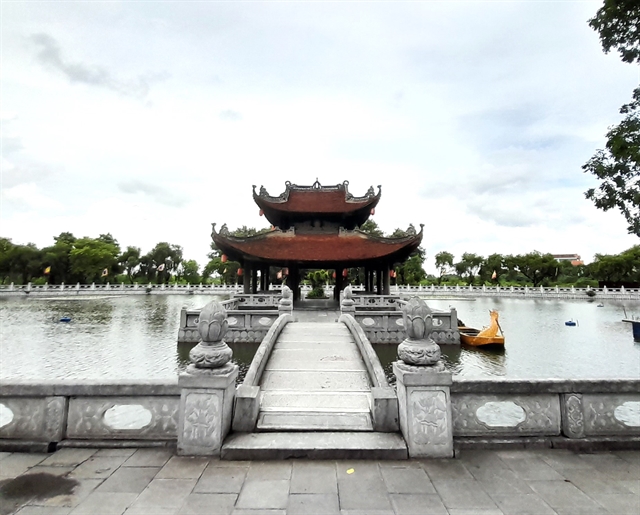 |
| The Water House was where kings often stayed to listen to 'quan họ' singing and watch water puppetry. VNS Photo Thanh Nga |
Đô Temple also has the Water House located on a crescent-shaped lake, connected to the Ngũ Long Môn Square by a stone bridge. The Water House has five rooms, with an architectural style carved with sophisticated patterns. In the past, when kings visited their hometown, they often stayed here to listen to quan họ singing and watch water puppetry.
This place was once chosen by the Indochina Bank to be printed on its banknote. In 2003, the image of this water house was chosen to be printed on the VNĐ1,000 coin.
For its cultural and history values, Đô Temple was ranked as a special national heritage site in 2014. VNS
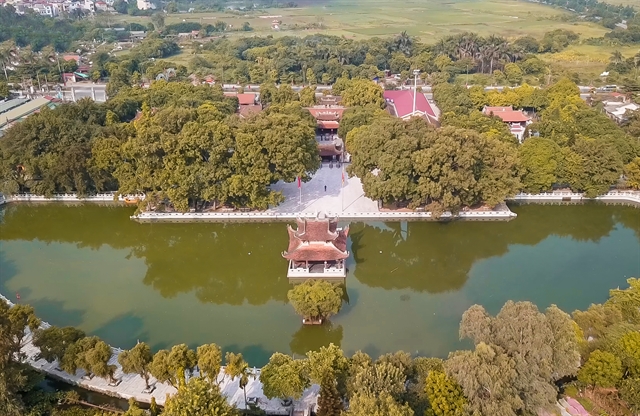 |
| Đô Temple from above. — Photo bacninhtv.vn |


.jpg)
